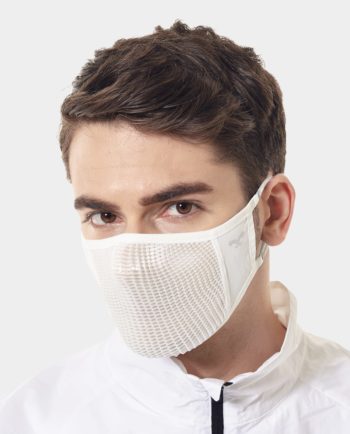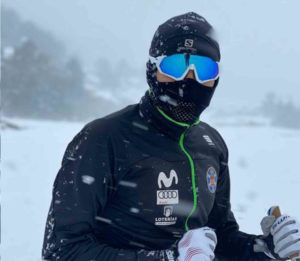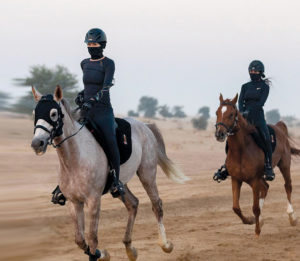The Best Lightweight, Moisture-Wicking Cooling Neck Gaiter and Face Coverings
Dedicated athletes don’t let a little something like hot weather get in the way of consistent and prolonged training. Even when the sun bears down mercilessly from peak summer skies, they strap on their gear, grab their water bottles and step out to stick to their athletic routines. However, without sufficient precautions, this dedication can lead to serious heat-related illnesses that can have long-term, sometimes even permanent effects.
Why is it bad to exercise in the heat?
According to the Mayo Clinic exercising in the heat causes excessive stress to the body. In addition to the physical strain of the exercise itself, the higher temperature exhausts the body faster, causes loss of moisture through sweating and increases core body temperature, all of which can contribute to multiple health issues.
How does the heat harm our body?
As the core temperature rises, more blood circulates through the skin to cool down. However, this takes blood away from the core and the muscles, which forces the heart to beat faster to be able to pump more blood. Additionally, if sweat does not evaporate fast enough in humid conditions, that adds to the stress and hikes up the body temperature even further. All of this makes physical activity more strenuous, even if the same activity was perfectly tolerable in cooler temperatures.
In particularly high heat conditions, the process described above can result in the following conditions:
Heat Cramps: Painful muscle cramps that can occur when exercising in the heat even when body temperature remains normal. Apart from the pain, the afflicted muscles may become firm and experience spasms.
Heat Syncope: Alternatively called exercise-associated collapse, this refers to the fainting or lightheadedness caused during high heat conditions. It often occurs after an individual has been standing for a while, or has stood up quickly after sitting for a while. It can also emerge if someone suddenly stops after a spate of intense movement – like running or other high-octane cardio.
Heat Exhaustion: In this case, body temperature rises, often to dangerous levels. The patient experiences nausea, weaknesses, fainting, excessive sweating, headache, vomiting, and cold skin. Without immediate attention, it can lead to heatstroke.
Heatstroke: When the body is unable to cool itself and core temperature hikes up above 104F (40 C), the body reaches a life-threatening state termed as heatstroke. At this point, you will experience irritability, headaches, heart rhythm anomalies, nausea, fainting, dizziness, vomiting, impaired vision and severe fatigue. In the absence of immediate medical attention, this will lead to brain damage, organ failure, and in some cases death.

How to Safely Exercise in the Heat
Exercise strategically: Oliver Gibson, a senior lecturer in exercise science at Brunel University London, states that it is best to move exercise indoors or to the morning. Essentially, workout in temperatures that are tolerable and won’t force the body to malfunction. This is especially true for city folk as, to quote Dr. Gibson, “In an urban area, it is likely that the concrete will have retained a high amount of residual heat that will radiate back.”
Focus on Acclimatization: William O. Roberts, MD, FACSM, a family medicine and sports medicine doctor at the University of Minnesota’s Phalen Village Clinic, says “When the weather warms, you need to be acclimated to the temperature change,”. Essentially, expose your body to increased heat in smaller doses to let it get used to the high temperatures.
Let’s say you have a marathon coming up in the middle of the day in a month. Start by stepping out for a 10 minute jog every day for a week, then increase time to 20 minutes, then 30 and so on. Basically, get your body acquainted with weather conditions it will have to function in.
Hydrate religiously: According to Suzanne Girard Eberle, author and sports dietitian, “You lose 2 1/2 cups of water per pound of body weight lost”. She recommends drinking 20 ounces of water two hours before exercise, 8 ounces of water a little while before going outside on a hot day and sipping water every 15 to 20 minutes during exercise.
Wear light, breathable clothing: Once again, according to Eberle, athletes might make the mistake of overdressing when exercising in the heat. The body generates a lot of heat, especially the leg muscles. To prevent trapping this heat and sweat, sportspeople need to use athletic wear made from lightweight fabrics that wick away sweat quickly. Additionally, they need to be seriously mindful about applying sunscreen at regular intervals. Cooling neck gaiter or cooling clothing are a great option.
AQUA-X: Ultra Thin Facial Protection Cooling Neck Gaiter For The Hottest Days
To keep athletes safe from the adverse effects of heat exposure, NAROO uses AQUA-X, a multifunctional nylon yarn fabric that manages moisture absorption to prevent heat exhaustion. Embedded into NAROO’s lightweight breathable face coverings, AQUA-X manages moisture via a process called evaporative cooling.
Essentially, evaporative cooling relies on thermal exclusivity to handle sweat. The fabric quickly absorbs heat and sweat from the skin. Additionally, since it is a moisture-wicking fabric, the sweat quickly evaporates, leaving the material dry and it’s wearer unhindered by excess heat or uncomfortable sweat.

Benefits of AQUA-X
- Cold-sensitive and blocks harmful UV rays.
- Manufactured from thin, light synthetic material that quickly absorbs sweat and dries by allows it to evaporate.
- Since it wicks moisture and stays dry, chafing will not occur due to a wet seam rubbing against your skin.
- Stronger and lighter than cotton apparel, especially when soaked.
- By allowing heat and moisture to escape into the air, it helps regulate body temperature and keeps it at stable levels.
NAROO’s N1 neck gaiter and N1s sports face covering are equipped with AQUA-X to allow flawless protection of sensitive facial tissue without hindering performance. Both these masks are designed with ultrathin fabric, and are perforated for maximum breathability. They also protect the skin from harsh UV rays and sun damage in any weather, while filtering out dust, fumes and insects (if you happen to be in less urban geographies). On hot days, athletes, sportspeople or even people out for their normal workouts need their bodies to thermoregulate i.e. balance the heat produced by the body with requisite heat loss through evaporative cooling. To prevent heat-induced fatigue, appropriate moisture-wicking clothing is mandatory.
Equipped with the aforementioned properties, AQUA-X offers 100% reliable facial protection from heat, sweat, dust, insects and other environmental elements that may irritate the body and lead to undue strains on the body’s natural functions. With industry-best research, top-of-the-line material and innovative manufacturing processes at play, NAROO offers the highest possible protection from the ravages of hot days and prohibitive temperatures. With AQUA-X, your body can train harder, work better and stay healthy throughout the toughest workouts.
-
N0U – Sun Protection Super Breathable 3D Face Mask with Acute Angled Fabric EX-SHADER
Rated 4.80 out of 535.00$















Indeed, N1 has incredible thermoregulatory properties that allow you to exercise intensively even on the hottest days. The filtering abilities of this mask also amaze with their effectiveness, protecting the respiratory organs from dust, small insects and exhaust gases in an urban environment.